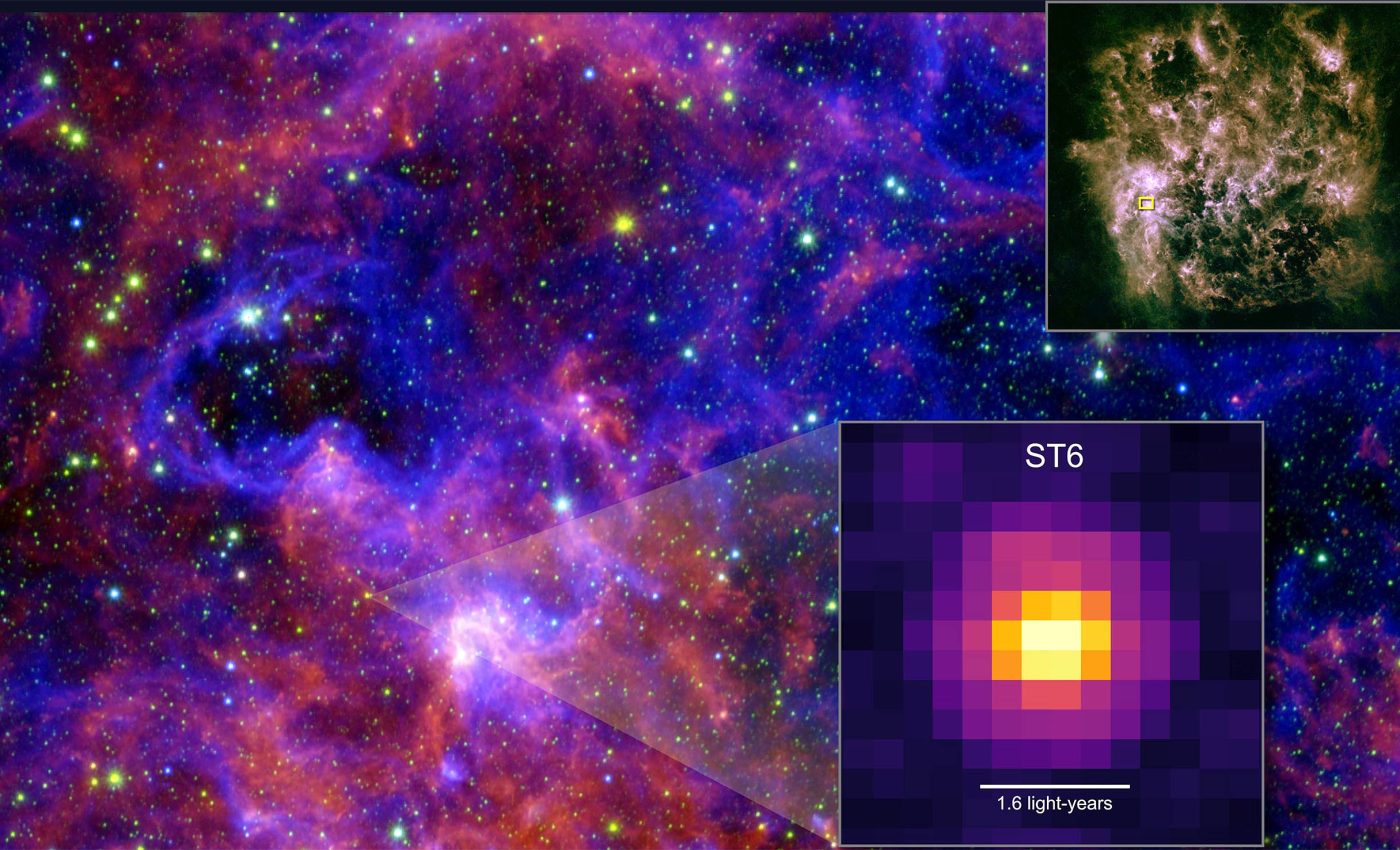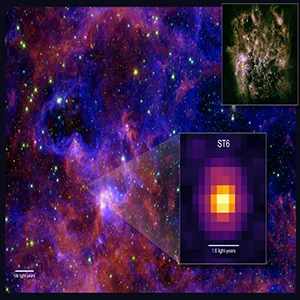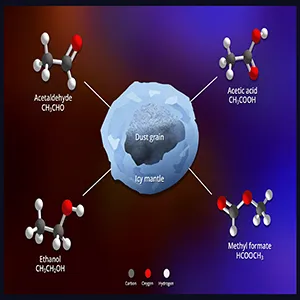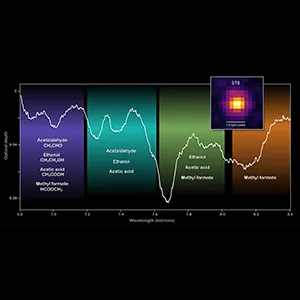
Building blocks of life found locked in ice outside of the Milky Way for the first time
Astronomers used the James Webb Space Telescope to spot five complex, carbon based molecules frozen in ice around a forming star outside our galaxy. The young star, called ST6, sits about 160,000 light years away in the Large Magellanic Cloud (LMC).
The signals from the building blocks of life in the LMC were faint but clear in mid-infrared light with wavelengths between 5 and 28 microns, captured by Webb’s MIRI instrument.
The first secure ice detections of ethanol, methyl formate, acetaldehyde, and acetic acid beyond the Milky Way are reported in a new paper.
Carbon ice around star ST6
Lead researcher Marta Sewilo of the University of Maryland guided the observations and analysis. The team worked from a single, carefully extracted spectrum to inventory the ices around star ST6.
The ice sample included methanol and a rare catch, acetic acid in solid form. That species had not been convincingly identified in space ice before this work.
These molecules were spotted by their absorption fingerprints in the 6.8 to 8.4 micron range. Webb’s spectral resolution made the matches reliable.
Finding this chemistry in the LMC matters because its environment is harsher than our local neighborhood. That context makes any complex ice a tougher find.

How carbon grows in galaxies
Astronomers group these compounds as complex organic molecules, carbon bearing molecules with six or more atoms. Scientists often shorten that to COMs after the first mention.
Solid surfaces on dust grains are active factories at low temperatures. Many COMs grow in ice through step by step reactions, according to modern models.
“The detection of COMs in ices suggests that solid-phase chemical reactions on the surfaces of cold dust grains can build complex kinds of molecules,” said Will Rocha of Leiden University (LU).
Some ice to gas ratios match in nearby protostars, as shown in a JOYS+ analysis. That pattern hints that solids can feed the chemistry seen once ices evaporate.
Ices act as both shields and scaffolds for fragile bonds. Once heated, those stored products can move into gas and start new networks of reactions.

Ancient galaxy chemistry
The LMC has lower metallicity, abundance of elements heavier than helium, than the Milky Way. That setting echoes conditions in the earlier universe.
In warmer and more strongly lit clouds, methanol tends to be scarce in ice. In a 2016 study, researchers described this as warm ice chemistry, where hydrogen does not stay on grains long enough to build methanol.
Lower methanol can ripple through to even larger molecules. The chemistry then favors other routes, which may help explain acetic acid’s clear appearance here.
The LMC also bathes young stars in stronger ultraviolet light than typical Milky Way nurseries. That extra energy can break bonds and remake them in ways laboratory work is starting to map.
Linking patterns across stars
The ST6 results also probe a long standing puzzle about isomers, molecules with the same atoms arranged differently. Methyl formate and acetic acid often trade places in models and observations.
Modern chemical models show that ultraviolet light can bias ices toward acetic acid early on. That behavior may suit the LMC, where external radiation is stronger.
Meanwhile, Webb’s view is not limited to one object type. High mass protostars inside our galaxy have now shown similar icy fingerprints through the JOYS program.
Those Milky Way results give a baseline for ST6. They help separate what is universal in ice chemistry from what is driven by local conditions.

Not proof of life
This discovery does not claim life elsewhere. It shows that known ingredients for biochemistry can form and persist in places far from home.
COMs do not guarantee that planets will assemble or that biology will emerge. They simply load the deck with options that chemistry can explore over time.
Future study of star ST6
The team plans to study more protostars in the LMC and its neighbor, the Small Magellanic Cloud (SMC). Larger samples will reveal whether ST6 is typical or an outlier.
Lab work also needs to catch up with space data. Better ice spectra for key molecules would sharpen identifications and narrow uncertainties.
Follow up maps with ALMA can search for these ices turning to gas as ST6 warms. That would connect the solid signals to known gas phase chemistry in one system.
Recent progress with JWST has already expanded the ice catalog in nearby protostars. Each addition tightens the links between solid and gaseous chemistry in star forming regions.
The study is published in The Astrophysical Journal Letters.
—–
Like what you read? Subscribe to our newsletter for engaging articles, exclusive content, and the latest updates.
Check us out on EarthSnap, a free app brought to you by Eric Ralls and Earth.com.
—–













